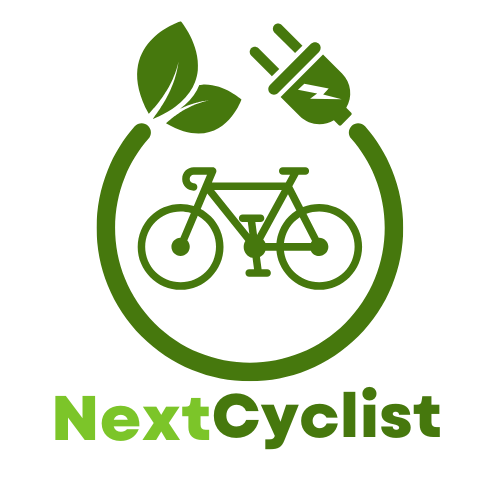Ever wondered how tire pressure affects your e-bike's speed? It might seem like a minor detail, but the right air pressure can turn a sluggish ride into a smooth, speedy adventure. Trust me, if you're looking to enhance your ride and save energy, this is a game-changer you can't ignore.
So, why does tire pressure matter? Low or high pressure can lead to poor handling and increased rolling resistance, making every pedal harder than it needs to be. Who wants that? The good news is that keeping your tires inflated to the right pressure is a quick fix that can make a world of difference in your performance on the road.
In this article, we're going to look closely at how tire pressure impacts speed. You'll learn what the ideal pressure range is for your e-bike and how to check and maintain it easily. Stick around, and by the end, you’ll be equipped with practical tips to optimize your rides. Let’s make those wheels fly!
TL;DR
- Tire pressure significantly affects your e-bike's speed and efficiency; it’s measured in PSI.
- Check tire sidewalls for the recommended PSI tailored to your bike type.
- Under-inflation leads to increased rolling resistance, slowing you down and straining the motor.
- Regularly check pressure with a gauge, ideally once a month or before long rides.
- Inflate tires according to load; heavier loads require higher pressure.
- Optimal tire pressure minimizes drag and enhances speed, particularly on smooth roads.
- Look for signs of incorrect pressure: flat spots indicate under-inflation, while center wear suggests over-inflation.
- Proper maintenance can improve performance, comfort, and tire longevity.
Understanding Tire Pressure Basics
Tire pressure is a crucial factor when it comes to how your ebike performs. Measured in PSI (pounds per square inch), maintaining the right tire pressure can make all the difference in your ride's speed and efficiency. Here’s a quick rundown on why understanding tire pressure matters:
-
Recommended PSI varies: Different bike types and tire sizes need specific tire pressures. For instance, mountain bikes typically require a lower PSI, while road bikes need higher. Always check your tire sidewalls for the manufacturer’s recommended pressure.
-
Under-inflated tires increase rolling resistance: If your tires are not adequately inflated, you'll encounter more friction on the road. This can slow you down, decreasing your speed and adding unnecessary strain on the motor.
To make sure you get the best performance from your ebike, here are some steps to follow:
- Check Pressure Regularly: Use a reliable pressure gauge to check your tire pressure at least once a month or before a long ride.
- Inflate When Needed: If your tires are low, add air to reach the recommended PSI. This can usually be done at home or at a local gas station.
- Adjust According to Load: If you’re carrying extra weight, like groceries or a passenger, consider increasing the tire pressure to accommodate the added load.
By keeping an eye on your tire pressure, you can enhance your riding experience, saving both money and time on repairs down the line.
Lastly, if you're looking for a handy tool to help with your ebike tire maintenance, check out this e-bike tire pressure calculator to always ride at the right pressure!
How Tire Pressure Impacts Speed
Understanding how tire pressure affects your ebike's speed can make a big difference in your riding experience. Properly inflated tires ensure minimal drag, allowing you to glide smoothly over surfaces without unnecessary resistance. Here are some essential insights on tire pressure and speed:
Properly inflated tires ensure minimal drag.
When your ebike tires are inflated to the recommended pressure, they roll more efficiently. This means less energy is wasted overcoming drag, resulting in a smoother ride. Check your tire pressure regularly—invest in a good air pressure gauge to help you get this right. A well-maintained tire can add significant speed, especially on long rides.
Lower pressure can slow you down, especially on flat surfaces.
Riding on under-inflated tires can create too much surface contact and resistance. This means you’ll use more energy pedaling to maintain speed. For instance, if your tires are 2 psi below the recommended level, you might notice a slight but noticeable decrease in speed on flat surfaces. Always refer to your ebike’s manual for the optimal pressure range and adjust accordingly.
Higher pressure can improve speed on smooth roads.
Conversely, inflating your tires to the higher end of their recommended range can enhance speed on smooth, paved surfaces. Higher pressure reduces rolling resistance, allowing you to zip along with less effort. Just remember not to exceed the maximum pressure indicated on the tire wall, as this can lead to blowouts and a loss of control.
Quick Tire Pressure Reference Table
| Pressure Level | Effect on Speed | Best For |
|---|---|---|
| Under-inflated (< psi recommended) | Increased drag, slower speed | Rough terrains or trails |
| Optimal inflation (recommended psi) | Minimal drag, smooth ride | All-around riding |
| Over-inflated (> max psi) | Potentially dangerous, decreased control | Avoid this condition |
By paying attention to your ebike’s tire pressure, you can enhance your speed and overall riding experience. Keep those tires properly inflated, and enjoy every ride!
Finding the Right Tire Pressure for Your E-Bike
Finding the right tire pressure for your ebike is crucial for optimal performance and comfort. It affects everything from your ride's speed to how well you grip the road. So, let's break it down into steps to help you maintain the best experience on your electric bike.
-
Check the tire sidewall for recommended PSI: Most e-bikes have a recommended pressure range printed right on the tire's sidewall. Look for the PSI (pounds per square inch) number; this is your baseline. Stick to this range to ensure your tires are neither under-inflated nor over-inflated. Under-inflated tires can slow you down and wear out quicker, whereas over-inflated tires might lead to a harsher ride and decreased contact with the road.
-
Adjust pressure based on riding conditions and weight: Think about how and where you plan to ride your ebike. If you're riding on rough terrain, a lower pressure might give you better grip and comfort. Conversely, if you're cruising on smooth pavement, a higher pressure can effectively increase speed. Don’t forget to consider your weight and any additional gear you may be carrying; heavier loads typically call for slightly higher tire pressure to prevent pinch flats.
-
Regularly check pressure, especially before long rides: Make it a habit to check your tire pressure before any lengthy rides. This small step can save you from unpleasant surprises. Use a reliable tire pressure gauge; it’s better to be proactive than reactive. Keeping your tires inflated to the correct PSI can greatly improve your overall riding experience.
By following these steps, you'll not only ensure a smoother ride but also extend the life of your tires. Remember, well-maintained tires can help you enjoy every moment on your ebike!
| Tire Pressure Considerations | Recommended Range (PSI) | Notes |
|---|---|---|
| City Riding | 30-50 PSI | Smooth roads, light riding |
| Trail Riding | 25-40 PSI | Rough terrain, better grip |
| Heavier Loads | 40-60 PSI | Extra weight requires more pressure |
Signs of Incorrect Tire Pressure
Getting the tire pressure right on your ebike is crucial for performance and safety. Incorrect tire pressure can lead to decreased speed and overall ride quality. Let’s break down the signs that your tire pressure might not be where it needs to be.
Flat spots on tires indicate under-inflation.
If you notice any flat spots on your tires, it’s a clear sign of under-inflation. This happens when the tires aren’t properly inflated, causing part of the tread to make consistent contact with the road. To fix this, simply check your tire pressure using a reliable gauge. If it's below the recommended PSI, pump them up to the right level. This quick check can enhance your ride quality significantly.
Excessive wear in the center suggests over-inflation.
On the flip side, if the center of your tire shows excessive wear, you might be dealing with over-inflation. Over-inflated tires can lead to a harsher ride and can even increase the risk of a blowout. To remedy this, reduce the air pressure to the specified levels, helping to ensure even tire wear and a smoother ride.
A bumpy ride can hint at improper tire pressure.
If your daily ebike commute feels bumpier than usual, it might be due to improper tire pressure. A bumpy ride isn’t just uncomfortable; it can impair control and increase wear on your bike. Make it a routine to regularly check and adjust your tire pressure based on the environment and your riding style.
Quick Reference Table
| Tire Issue | Significance | Action Needed |
|---|---|---|
| Flat spots on tires | Under-inflated | Inflate to recommended PSI |
| Excessive center wear | Over-inflated | Deflate to recommended PSI |
| Bumpy ride experience | Improper tire pressure | Check and adjust tire pressure |
By keeping an eye out for these signs, you can ensure your ebike stays in top shape, providing a smoother, safer ride. Regular maintenance of tire pressure not only enhances performance but can also help save you money in the long run.
Maintaining Ideal Tire Pressure
Keeping your ebike tires at the right pressure is key to ensuring a smooth ride and maximizing speed. An ideal tire pressure not only contributes to better handling but can also improve your overall biking experience. To maintain this, here are some straightforward steps to follow:
-
Use a reliable tire gauge to check PSI regularly: Regular checks with a good tire gauge help ensure your tires are properly inflated. Be sure to check the recommended PSI range, usually noted on the tire wall, and keep your tires within this limit for optimal performance.
-
Pump tires as needed, especially during changes in temperature: Tire pressure can fluctuate with changes in temperature. In colder months, pressures often drop, while they can increase in the heat. Make it a habit to check your tires before your rides, and use a reliable pump to inflate them as needed. Remember, under-inflated tires can slow you down, while over-inflated ones may risk a blowout.
-
Join a DIY workshop to learn more about bike maintenance: Hands-on experience is invaluable! Participating in a local DIY workshop can provide you with practical skills not just for tire maintenance but for other essential repairs and upkeep. Engaging with fellow enthusiasts also opens up opportunities to learn valuable tips, ask questions, and share experiences.
Maintaining the right tire pressure in your ebike is not just about speed; it’s also about safety and performance.
| Action Item | Why It Matters |
|---|---|
| Check PSI regularly | Ensures optimal performance and safety. |
| Adjust pressure for temperature changes | Prevents accidents and enhances riding experience. |
| Attend DIY workshops | Boosts your maintenance skills and knowledge base. |
By following these simple guidelines, you'll not only enhance the performance of your ebike but also develop your confidence as a DIY enthusiast. Happy riding!
To sum it up, tire pressure really does affect the speed of your e-bike. Keeping your tires within the recommended PSI not only boosts your speed but also improves your overall riding experience. Remember, under-inflated tires can slow you down while over-inflated ones can lead to unsafe conditions. Regular checks and adjustments based on your riding style are key to enjoying a smoother, faster ride.
So, what’s next? Grab a reliable tire gauge and start checking your e-bike’s tire pressure today! If you want to level up your DIY game, consider joining a local workshop to learn about tire maintenance and more. Let’s get those tires rolling right — your speedier rides await! 🚴♂️

